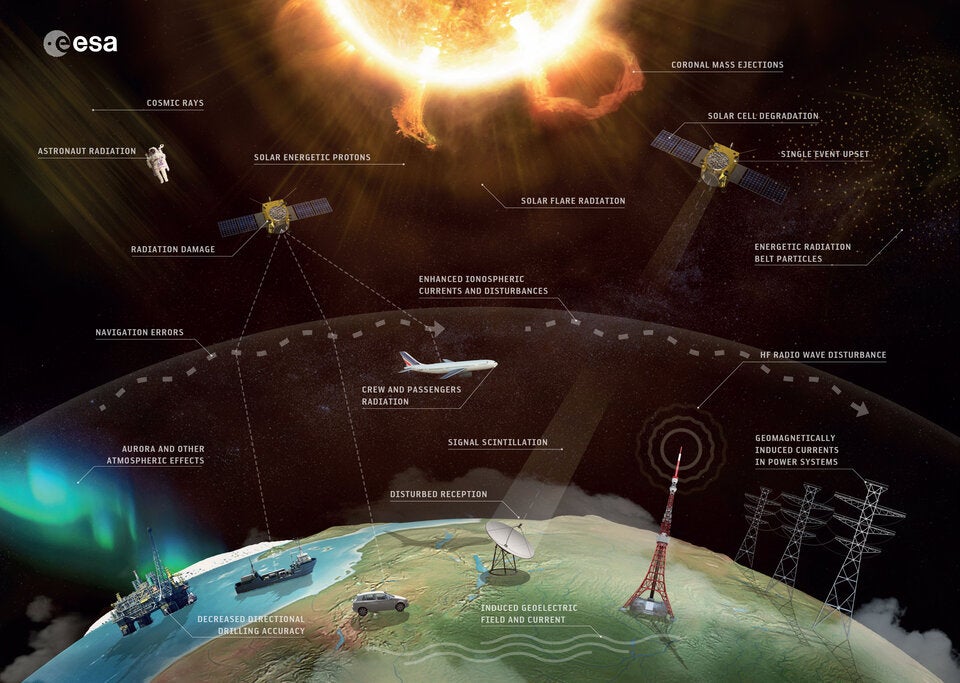European satellite Salsa makes fiery plunge into Earth’s atmosphere in first-ever ‘targeted’ re-entry
Satellite’s successful targeted reentry makes it a ‘pioneer’ in mitigating the global space debris problem
Your support helps us to tell the story
From reproductive rights to climate change to Big Tech, The Independent is on the ground when the story is developing. Whether it's investigating the financials of Elon Musk's pro-Trump PAC or producing our latest documentary, 'The A Word', which shines a light on the American women fighting for reproductive rights, we know how important it is to parse out the facts from the messaging.
At such a critical moment in US history, we need reporters on the ground. Your donation allows us to keep sending journalists to speak to both sides of the story.
The Independent is trusted by Americans across the entire political spectrum. And unlike many other quality news outlets, we choose not to lock Americans out of our reporting and analysis with paywalls. We believe quality journalism should be available to everyone, paid for by those who can afford it.
Your support makes all the difference.The European Space Agency’s (ESA) pioneering Salsa satellite made a fiery descent into the Earth’s atmosphere on Monday after spending over two decades studying space weather.
Salsa plunged into the atmosphere at about 6.45pm UT, the ESA said in a post on X.
The satellite’s successful targeted reentry makes it a “pioneer” in mitigating the global space debris problem, proving that such manoeuvers can help prevent space probes from contributing to junk in orbit around Earth.
“A few minutes ago, the Cluster operations team successfully listened one final time for Salsa via the Estrack ground station in Kourou. Communication with the satellite has now reached its end,” the space agency said.

The pioneering satellite was part of a quartet called Cluster, which also included Rumba, Samba and Tango launched 24 years ago to study space weather events such as solar storms.
Data from the satellite quartet has helped scientists better understand Earth’s powerful magnetic shield, the magnetosphere, which makes the planet a unique habitable world.
“For over two decades, Cluster has shown us time and time again how important the magnetosphere is in shielding us from the solar wind,” Cluster mission manager Philippe Escoubet said.
“It has watched the effects of solar storms to help us better understand and forecast space weather.”
The satellites, launched in 2000, were initially planned only for a two-year mission, but the “impressive and world-changing science” they helped conduct made ESA keep the cluster going.
“It’s an emotional day for the teams that have worked on keeping Cluster going for the last 24 years, lasting way beyond the originally planned mission duration of two years,” ESA noted.

The satellite’s return marks the first-ever “targeted” re-entry for a satellite.
It plunged through the planet’s atmosphere, burning up completely “in under a minute”, at a specific time over a sparsely populated region near Easter Island in the South Pacific, the space agency said.
“Back in January we tweaked Salsa’s orbit to make sure that on 8 September it experiences its final steep drop from an altitude of roughly 110km to 80km,” Cluster operations manager Bruno Sousa said.
“With the reentry complete, we’re hoping to learn more soon about the results of an airborne observation experiment,” the ESA said.

Using data obtained from Salsa, scientists hope to be able to predict even better the time and location of satellite reentries in the future.
“Now that the reentry has taken place, we’re hoping to be able to learn more from the reentry science team about the results of the airborne observation experiment,” the ESA said.

Join our commenting forum
Join thought-provoking conversations, follow other Independent readers and see their replies
Comments